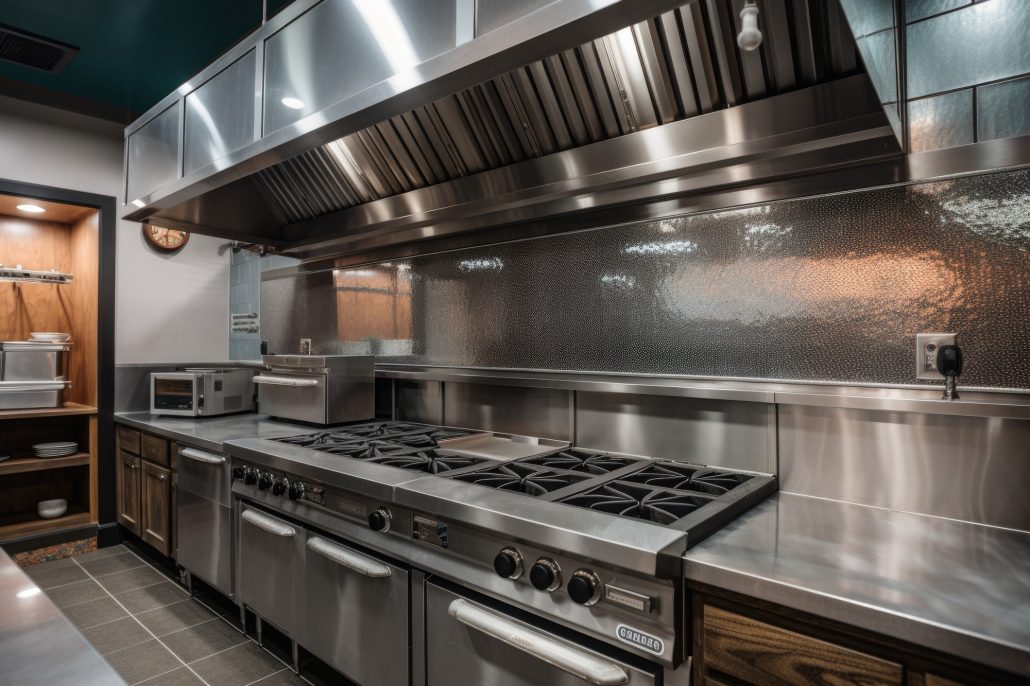A Foodpreneur’s Guide to Choosing Commercial Range Hood Systems
Your restaurant is bustling, and the air is filled with the symphony of sizzling pans and bubbling pots. The aroma of delicious food fills the room, enticing hungry patrons. But behind the scenes, a silent battle rages on. Heat, smoke, and grease threaten to turn your kitchen into a warzone.
This is where commercial range hood systems come in. They’re more than just a hulking metal box. They’re the guardian of your kitchen, silently battling the elements to keep your staff comfortable and your operation running smoothly.
Choosing the right hood can feel like navigating a labyrinth. But worry not, aspiring foodpreneur! This guide will be your compass. Read on and explore the different types of hoods, ventilation systems, and key features you need to consider.
Understanding Your Needs
Before choosing fancy features, take a step back and assess your restaurant’s needs. What dishes will you be whipping up? Searing steaks and stir-frying veggies will generate way more smoke and grease than simmering stews.
The size of your kitchen and cooking stations also matters. How many burners will be blazing all at once? These factors will determine the size and power of the hood you need.
Also, don’t be afraid to explore commercial range hoods online or visit restaurant supply stores to get a feel for the different options. Doing so will help you narrow down your choices and ensure you ask the right questions when consulting with an HVAC professional.
Types of Commercial Range Hoods
When it comes to commercial range hoods, two main types dominate the battlefield: vertical and island hoods.
A vertical range hood is perfect for space-saving kitchens. It efficiently captures smoke and grease from standard ranges and fryers. It’s like a focused attack, concentrating on the primary source of airborne enemies.
On the other hand, island range hoods are designed for open kitchens or large ranges. They boast a wider capture area, which ensures no wisp of smoke or grease escapes. Ideal for high-volume cooking or expansive layouts, they’re the ultimate commanders of the kitchen airspace.
Types of Ventilation Systems
Your hood needs a way to push all that captured smoke, grease, and heat out of your kitchen. That’s where ventilation comes in. You have two main options: gravity and forced ventilation.
Gravity ventilation relies on hot air naturally rising and escaping through vents in your roof. It’s cheap to install but has limitations. Low ceilings or weak air currents can leave your kitchen hazy and uncomfortable.
Forced ventilation is a more powerful counterpart. It uses exhaust fans to forcefully remove hot air. Ideal for most restaurants, especially those with high-heat cooking or limited natural ventilation.
Choosing the Right CFM Rating
CFM, or cubic feet per minute, indicates the amount of air a range hood can move in one minute. The higher the CFM, the more powerful the ventilation. Here’s a general guide:
- Low-heat cooking (up to 50,000 BTU): 600-1000 CFM
- Medium-heat cooking (50,000-100,000 BTU): 1000-1500 CFM
- High-heat cooking (over 100,000 BTU): 1500 CFM and above
Remember, this is just a starting point. Factor in the size of your kitchen and cooking style for a more accurate estimate. Consulting an HVAC professional is recommended to determine the ideal CFM rating for your specific needs.
Filtration Matters: Grease Filters and Beyond
Grease filters trap airborne grease particles before they coat your kitchen and ductwork. Regular cleaning or replacement is crucial to maintain their effectiveness. But grease isn’t the only enemy.
For smoky dishes or high-volume cooking, consider additional filtration options. Activated carbon filters tackle stubborn odors, while HEPA filters go a step further, removing smoke particles and even airborne contaminants.
The choice depends on your cooking style and local regulations. Some areas have stricter air quality standards, so check with your local authorities to see if additional filtration is required.
Prioritizing Ease of Maintenance
Commercial kitchens are war zones—grease splatters, food spills, and the constant battle against grime. Your range hood system shouldn’t add to the chaos. Here’s why ease of maintenance is key:
- Time Is Money: Nobody has time for a complicated cleaning process. Look for hoods with easily removable and cleanable grease filters. Opt for dishwasher-safe filters whenever possible.
- Simple Is Best: Smooth, stainless-steel surfaces are a breeze to wipe down. Avoid hoods with intricate nooks and crannies that trap grease and grime.
By prioritizing ease of maintenance, you’ll save time and prevent headaches down the line. Remember, a clean hood is a happy (and safe) hood!
Final Thoughts
Choosing the right commercial range hood system is an investment in the success of your restaurant. By following this guide, you’ll ensure a clean, comfortable, and safe environment for your staff and patrons alike. So, get ready to explore commercial range hoods and find the perfect fit for your culinary haven!














Leave a Reply
Want to join the discussion?Feel free to contribute!